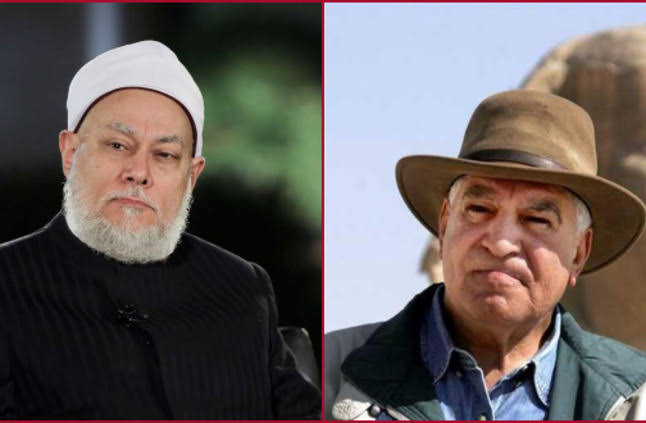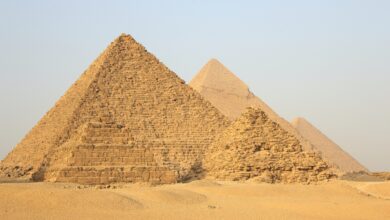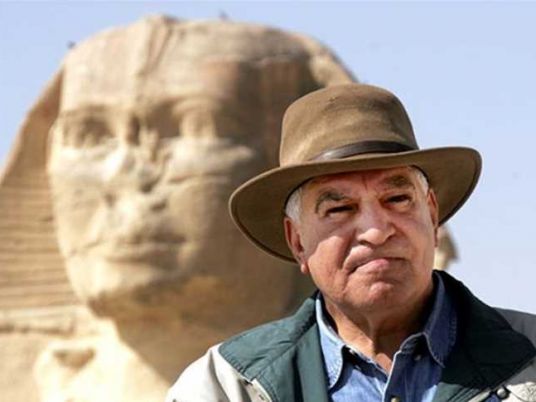
Ali Gomaa, a member of the Council of Senior Scholars of Al-Azhar and the former Grand Mufti of Egypt, issued a statement in response to criticisms made by former Minister of Antiquities Zahi Hawass.
Hawass had criticized Gomaa’s comment — made during the program “Egypt, the Land of the Prophets” — that it might have been the Islamic prophet Idris who taught the ancient Egyptians how to build the pyramids, and that the sphinx was built in his honor.
Gomaa said in a statement that his old friend Hawass had not called or seen the program himself, and had not verified what was said, but instead relied on what had been circulated by the media.
“If he had seen the program, he would have known that I differentiated between scientific theories and folktales,” he said.
He added that his program aimed to show how much Egyptians loved their country and to highlight Egypt’s distinguished geographical location.
“But [Hawass] did not pay attention to this. He wanted to give me a lecture on antiquities, which is something that I have not approached and do not even want in our program,” the statement said.
Gomaa continued: “Hawass committed an error by not following the basic steps of any serious discussion. I would like to tell him to listen to the program first and see how from the beginning I marked the difference between scientific theories (which are his specialty) and folktales.”
Gomaa added that Hawass had used inappropriate words to describe him and that Hawass had claimed that he was the only source of knowledge.
Gomaa hopes that the national media takes into account the aims and objective of the program, as well as the aims of those behind the controversy generated by the BBC and other channels that circulated false claims.
Gomaa concluded his statement by saying: “Addressing folktales has nothing to do with issuing fatwas. I just want to let you know that a fatwa is a statement about Sharia; it is not an analysis of the reports of Arab travelers.”
In an interview with TV host Amr Adeeb on MBC Masr, Hawass said: “Sheikh Ali Gomaa is a great man and I love him dearly. But it’s not appropriate for him to say that.”
He also denied any link between Osiris and Prophet Idris, saying “Of course, there is no link. The revered Mufti speaks without evidence, while I used linguistic and archaeological evidence. Forgive my fierce response to the revered Mufti despite my great respect for him.”
Responding to the former Mufti’s claim that Idris also invented mummification, Hawass explained that it was not discovered by ancient Egyptians at once, but rather developed gradually — the First Dynasty originally mummified the lower part of the body, and by the 18th Dynasty the full body was mummified.
He concluded: “The Mufti speaks without evidence, and I respect him very much… But he needs to stick to expressing his opinions on religion, not archaeology.”
Gomaa said in a statement that Prophet Idris may have been the one who taught the ancient Egyptians how to build the pyramids, saying “There are presumptions that support this perception, including the fact that the construction of the Sphinx preceded the building of the pyramids.”
And on the CBC channel’s program “Egypt, the Land of the Prophets” Gomaa claimed that the sphinx was likely made to honor Prophet Idris, citing the fact that the sphinx was designed with a human face as opposed to typical animal features.



